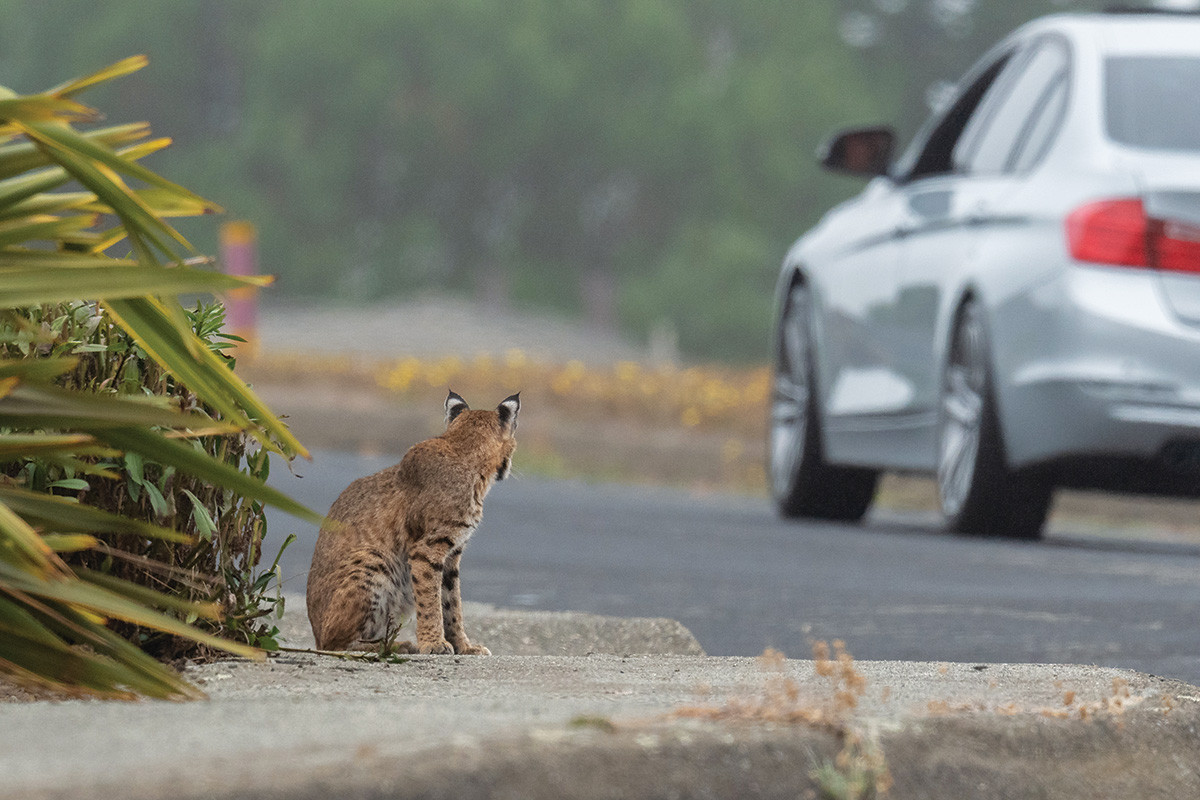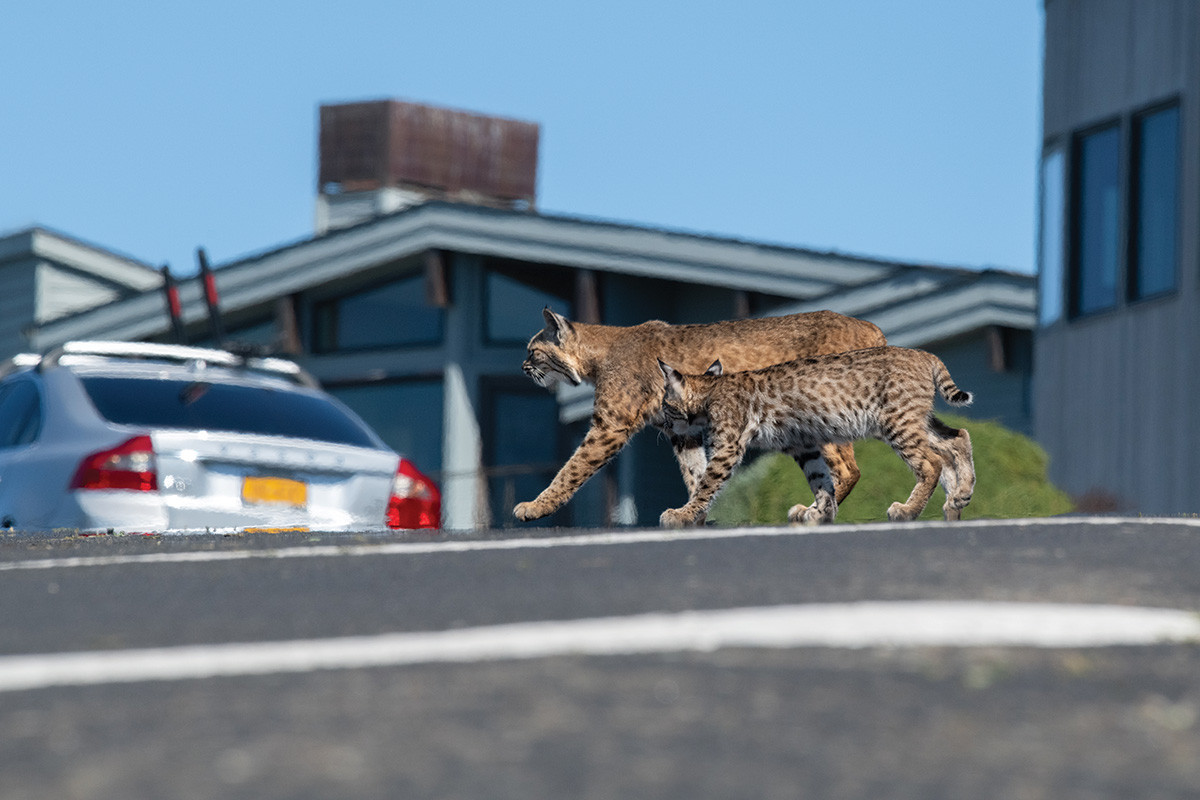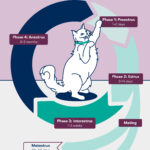Bobcats, often referred to as “Country Cats” for their wild nature, are captivating creatures that have adapted remarkably to suburban environments. As a conservation photographer and wildlife educator based in Marin County, I’ve had the privilege of observing these animals closely, particularly one exceptional mother bobcat. Her story, and that of her kittens, reveals the surprising ways these felines navigate and thrive in landscapes increasingly shared with humans.
Bobcats (Lynx rufus) are widespread throughout the Bay Area, yet their lives are increasingly intertwined with human development. While bobcat populations haven’t been extensively studied, research south of San José indicates they are present in areas with low to medium housing density, suggesting an adaptability to suburban living. Despite facing threats like habitat loss and rodenticides, bobcats are resourceful “country cats” capable of raising their families even in close proximity to humans. The question then becomes: how do these adaptable felines make suburbia their home and successfully nurture their young?
 Kittens curiously observing their surroundings
Kittens curiously observing their surroundings
This particular bobcat mother, a seasoned pro in the art of suburban living, has shown incredible skill in finding safe havens for her kittens. In this suburban neighborhood, she frequently chooses dens under decks or within thickets of dense brush. Like most bobcat mothers, she leaves her kittens safely tucked away while she ventures out to hunt, especially crucial when they are very young. By August, at around four months old, these kittens were old enough to wait for her in a yard. Each kitten displays a distinct personality: one bold and boisterous, another smaller and timid, seemingly the runt, and the third with a noticeably calmer demeanor. Their days are filled with the typical kitten activities – alternating between playful wrestling, pouncing on anything that moves, and taking naps. It’s plausible that these “country cats” have learned that raising their young near human homes might offer a degree of protection from larger predators who are less inclined to approach human activity.
 Bobcat mother attentively waiting before crossing a suburban driveway
Bobcat mother attentively waiting before crossing a suburban driveway
When the mother bobcat sets out to hunt, her movements reveal an astonishing adaptation to the suburban grid. I’ve observed her utilizing sidewalks and even crosswalks as she navigates her territory. Here, she pauses at the edge of a driveway, assessing her surroundings. Roads are an unavoidable feature of a Bay Area bobcat’s territory, often separating den sites from crucial hunting areas. In California, a female bobcat’s territory averages around two square miles. Male territories are larger, averaging just under four square miles, and can expand further depending on the terrain and the abundance of prey. As “country cat” territories increasingly overlap with suburban and urban zones, the danger of vehicle collisions becomes a significant threat.
 Bobcat surveying an open space for prey in a suburban environment
Bobcat surveying an open space for prey in a suburban environment
The mother bobcat carefully scans an open area nestled between houses, her senses keenly focused on finding a gopher to bring back to her hungry kittens. Bobcats are masters of stealth hunting, relying on exceptional hearing and sharp eyesight to pinpoint prey. They exhibit remarkable patience, often remaining motionless for 20 to 30 minutes or more, waiting for the perfect moment to strike. Their eyes are adapted for low-light conditions, essential for crepuscular hunters, though they don’t perceive bright colors as humans do. While their sense of smell is less crucial for hunting, it plays a vital role in territorial marking and communication among these “country cats.”
 Bobcat mother carrying a large jackrabbit in her mouth
Bobcat mother carrying a large jackrabbit in her mouth
One sunny afternoon, I witnessed the mother bobcat’s hunting prowess firsthand. Crouching beneath a bush in a front yard, she exploded into action, seizing a black-tailed jackrabbit. The rabbit was nearly her own size, a testament to the bobcat’s strength and determination. Bobcats are incredibly muscular hunters. When they successfully take down large prey, or when feeding kittens, they often “cache” or store their kill for later. This resourceful mother dragged the jackrabbit into a dense coyote brush thicket at the edge of the neighborhood and carefully buried it. In my observations, bobcats sometimes engage in rapid, successive hunts. At other times, they conclude a successful hunt with meticulous grooming and a short rest. On another occasion, I saw this same mother return to a front yard with a kitten, unearthing and consuming a previously cached jackrabbit.
 Bobcat leaping to hunt rodents beneath ice plant ground cover
Bobcat leaping to hunt rodents beneath ice plant ground cover
Spotting a rodent beneath a patch of ice plant, the mother bobcat launches herself into the air, attempting to pounce on her prey. In this instance, she missed her target, but even for a skilled hunter like her, success is typically achieved in only about one in three attempts. Bobcats frequently hunt in the late afternoon, employing various strategies such as leaping from above onto prey, lunging horizontally at gopher holes, or reaching into burrows with a paw. They usually dispatch their prey with a precise bite to the neck or throat. Sadly, rodenticides pose a significant threat to these “country cats.” When bobcats consume poisoned prey, it can be fatal or increase their vulnerability to mange, a debilitating parasitic mite infestation. While these poisons were banned for consumer use in California in 2014, and further restrictions on commercial use took effect in 2021, they remain a concern.
Upon returning from a hunt, the mother bobcat’s demeanor shifts. She calls out to her hidden kittens, knowing they might have wandered slightly from their den. Her body language transforms into an almost prancing gait, then she pauses, sitting upright with ears perked, intently scanning for her young. The most spirited kitten of the litter, pictured here, greets her return with unrestrained enthusiasm, wrapping its paws around her neck and licking her face in a joyful reunion.
 Bobcat kitten looking lost or distressed in a suburban setting
Bobcat kitten looking lost or distressed in a suburban setting
Tragedy struck this bobcat family. One day, while observing the mother and one of her kittens, a neighbor shared the heartbreaking news that a kitten had recently been killed by a car. Tracking this bobcat family weekly, I felt a deep sense of loss. Seeing all three kittens had always been a reassuring sight. Vehicle strikes, along with rodenticide poisoning, are among the most serious dangers facing suburban “country cats.” I believe it was the kitten with the mild personality that was lost, as I have continued to observe only the other two. The mother bobcat’s behavior seemed to change noticeably after this incident. She became even more protective of her surviving kittens, keeping them hidden far more than with previous litters. These kittens also appeared more skittish than their older siblings from past years.
 Bobcat mother and kittens carefully crossing a suburban street
Bobcat mother and kittens carefully crossing a suburban street
By the time the kittens reach three to four months old, the suburban mother bobcat begins teaching them crucial survival skills, including how to safely navigate roads. When she wants her kittens to follow, she uses a soft “meow”-like call. To keep them hidden, she’ll growl if they attempt to join her prematurely. She employs the same growling vocalization when waiting at a curb, ensuring they remain on the sidewalk until it’s safe to cross. A month later, the kittens will start learning to hunt for themselves. Their initial attempts are often clumsy, sometimes disrupting their mother’s hunts by ineptly chasing after the gophers she’s stalking. Typically, kittens disperse to find their own territories by the end of their first year. Observant neighbors have reported that this remarkable mother has had at least five litters, suggesting she may be nearing the end of her natural lifespan. This current litter could very well be her last. It has been a profound privilege to witness her journey raising her young, resilient “country cats” in our shared suburban landscape.

